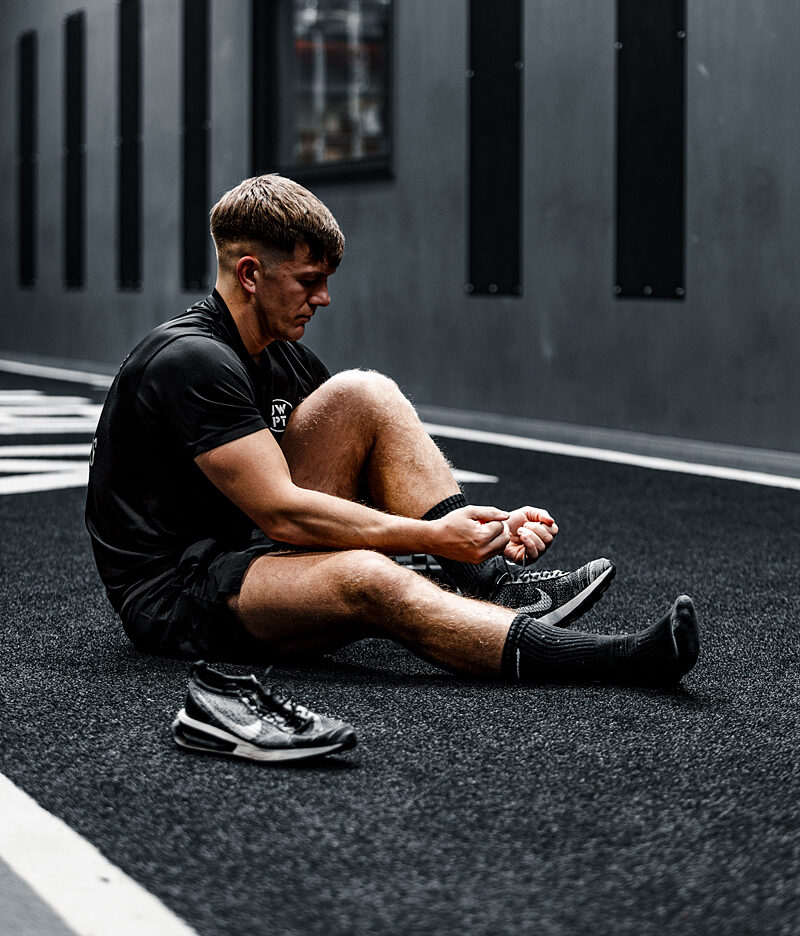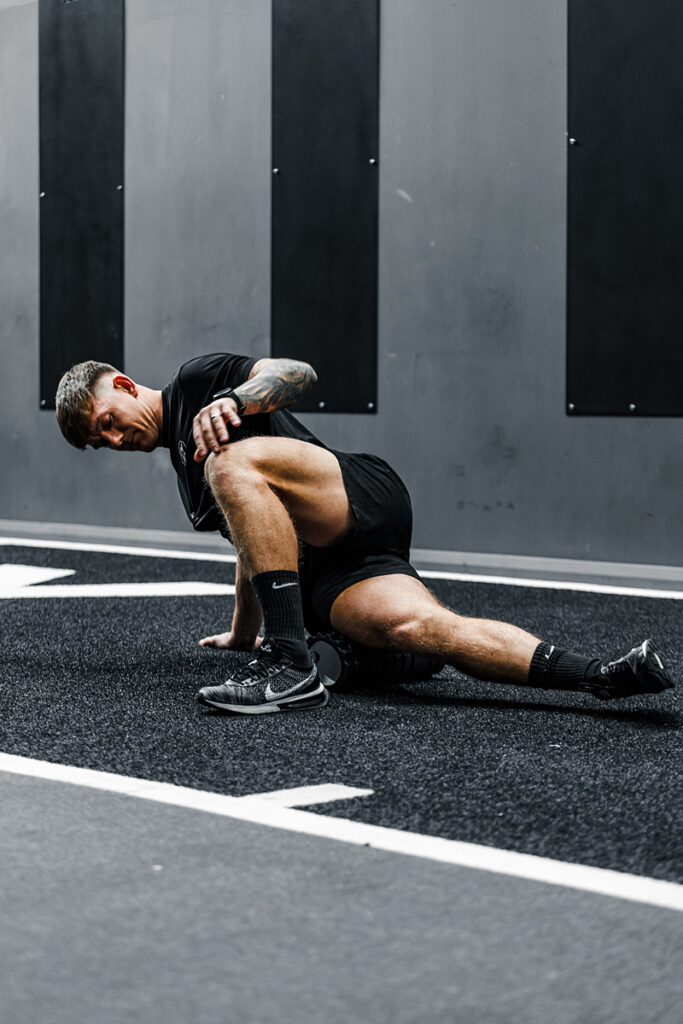Together we need to remove the guilt associated with rest days.
This is something I believe we all struggle with in a world of “more is better’ or ‘no days off’ mindset which has transcended into the fitness industry more-so in the past 5 years than ever before,
It’s like the UK fitness population came out of lockdown with more vengeance than ever before to exercise since UK government temporarily closed all our gyms. I’m all for supporting regular exercise regimes but HIT daily is unnecessary and unacceptable. High intensity and high frequency have an inverse relationship.
Over training is sometimes referred to as burnout, training stress syndrome or chronic fatigue, they’re all essentially the same thing: overtraining syndrome.
What is Overtraining syndrome?
According to the Journal of Sports Health, overtraining syndrome is “a maladapted response to excessive exercise without adequate rest, resulting in perturbations of multiple body systems (neurologic, endocrinologic, immunologic) coupled with psychological disturbances”.
In other words, it’s when you train too hard and too often with inadequate recovery. This results in a “domino effect” of physiological and psychological problems. A condition of overreaching is common in athletes with an incidence ranging from 5% to 60%. However, overtraining syndrome (OTS) is much less prevalent.
Overreaching is a state of excessive volume or intensity of exercise resulting in decreased athletic performance, for a temporary period. When training loads reach an athlete’s individual “tipping point”, he or she can be considered overtrained or overreached. With appropriate rest and recovery (and the absence of excessive stress), performance can be increased through supercompensation.
This doesn’t mean we can disregard the proof that the committed cave goer, the avid bootcamp goer or early morning runner are immune. The demands of daily work, family and life stressors are more susceptible.
OTS is a very specific and severe condition when overtraining without adequate rest and recovery leads to performance decrements that last more than 2–3 months coupled with a mood disturbance.
Why do we get OTS?
The emotional demands of competing and completing intense and undulating challenges like marathons, hyrox events, functional fitness competitions, triathlons and ultras are both taxing physically and mentally for the human body. The investment which they demand of us is part of why we do it, but sometimes the juice ain’t worth the squeeze.
Overtraining syndrome will creep up and take hold unless you recognise it early.
When we take a look through the wider lens we can add training demands, add work, family and social pressures which combine to create a perfect recipe for overtraining syndrome to develop.
What are the symptoms of OTS?
Overtraining symptoms can be split into two types:
Sympathetic symptoms are more common within athletes completing frequent high-intensity training such as sprinters and weightlifters. They include:
- Inconsistent and/or broken sleep patterns
- Increased fat mass
- Lack of emotional control
- Loss of appetite
- Decreased lean muscle mass
On the other hand, parasympathetic symptoms are more common in endurance athletes where excessive training volumes are the norm. They include:
- Increased injury occurrence
- Low mood e.g. depression, short fuse or anxiety
- Decreased recovery time between training sessions
- Increased DOMs (delayed onset of muscle soreness)
- Lack of motivation
- Elevated resting heart rate compared to previous normal range
Of course, many athletes experience feeling lethargic, lack of motivation and muscle soreness. This is not the aim of sport and exercise but there will be periods in training cycles where you go beyond the threshold, that comes at a cost. Is the juice worth the squeeze?
It can be difficult to self-assess these subjective feelings, therefore it is easy for overtraining to accumulate over a long period of time. This is where hiring a personal trainer can be invaluable. Remember, slow onset will need slow offset.
What gets measured, gets managed
If you’re not assessing then you’re simply guessing. Although many overtraining syndrome symptoms are subjective, some symptoms can be assessed. With the growing accessibility to wearable fitness tech and popular demand for health apps on your mobile device this is really helpful.
- Heart rate variability. HRV is considered a gold-standard method of diagnosing overtraining. Measured using a heart rate strap, HRV tracks the change in interval time between heart beats and determines your readiness to train – here is a personal app recommendation: ELITE HRV
- Resting heart rate. Get into the daily habit of taking your heart rate each morning and learn what your normal range is. If it ever creeps 10–15bpm higher than normal – and displays alongside some other symptoms – you could be on the brink of overtraining – recently I’ve purchased a Garmin watch and the app provides great data through its “body battery’ feature in-app: GARMIN CONNECT
- Physical performance. You’ll likely have a good idea what heart rates you normally train at. For example, if you usually complete an easy run around 120bpm but for the past few sessions it’s been above 130bpm (and felt harder too for the same pace) then it could be time for some rest – most activity tracking devices will provide HR tracking data for you: APPLE HEALTH
How to effectively recover from OTS?
The best treatment is very simple, in theory. But in practice, it’s very difficult for the avid gym goer. Complete Rest.
We cannot confirm how much rest you will need, this will be individual. Rest assured, this needs to be as long as it takes for all symptoms to disappear. That includes improved sleep quality and quantity, healthy eating habits and emotional control.
Sorry for another personal app recommendation here that keeps you glued to your mobile screen for longer than you prefer to be but definitely find this one useful for mindfulness: HEADSPACE
After complete rest, this re-introduction of exercise must be taken slow because the risk of relapse is high at this stage. For anyone regardless of fitness levels or age, you will recommence exercise with 5 – 10 minutes per day, and slowly build this up to an easy 60-minutes ensuring no fatigue is developed.
Here is a couple of our FREE online bootcamps, which are low intensity stretch and mobility sessions (25mins approx) for you to follow:
FREE ONLINE BOOTCAMP – MOBILITY PROGRAM 1
FREE ONLINE BOOTCAMP – MOBILITY PROGRAM 2
I would highly recommend seeking the guidance of a psychotherapist, mental health GP or sports psychologist if your overtraining syndrome was due to poor mental health.
The importance of sleep cannot be underestimated during rest and recovery. Not only is it likely to have been a contributing factor to overtraining syndrome in the first place, but high quality sleep is imperative for the bodies symptoms to achieve homeostasis.
Ways to prevent OTS
Prevention is always better than cure, and the best way to do this is through education. You need to understand what overtraining looks like and the consequences and risks of overtraining.
Nutrition plays a role in both cause and recovery. For optimal recovery, an anti-inflammatory diet will really boost recovery time and eliminate many symptoms. Nutrient density is very important and water makes up 70% of the human body. If you’re not well hydrated then you are not supporting your recovery process, read our Why You Should Stay Hydrated?
If you want to tick both the nutrient-dense and hydration boxes on a daily basis then I would definitely throw blueberries and fruits packed with phytonutrients into your breakfast bowl, overnight oats or adding a smoothie packed with wholesome veggies, fruits and juices. Getting an adequate consumption of protein is crucial for recovery too, read our Protein Guide 101
Last but not least, Recovery can take weeks, months and sometimes years. Be patient and don’t rush the process.
I hope you find this useful, and feel free to share with anyone you believe will benefit from this.
Stay Strong – Jake Wood PT







